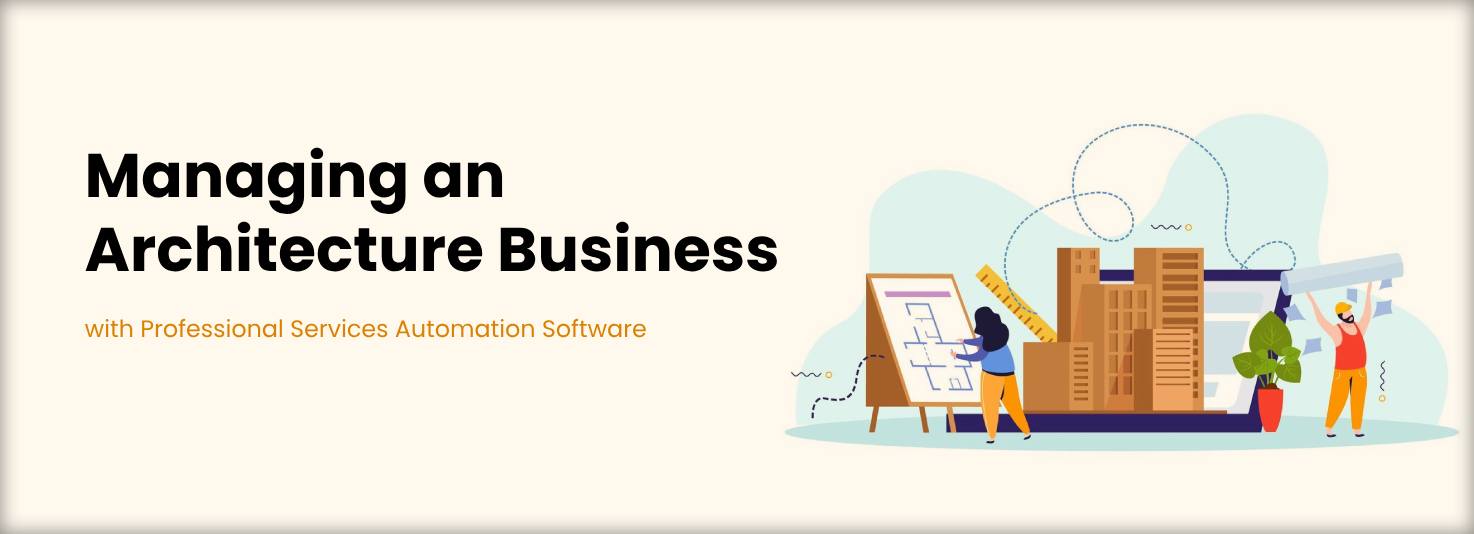Managing an Architecture Business with Professional Services Automation Software
In the competitive landscape of architecture, firms face unique challenges—balancing creativity with operational efficiency, managing diverse projects, and maintaining client relationships. Professional Services Automation (PSA) software emerges as a game-changer, providing architects with the tools needed to streamline operations, enhance collaboration, and ultimately deliver exceptional results.

Professional Services Automation software is a suite of tools designed to improve the efficiency and effectiveness of service-oriented businesses. For architecture firms, this means integrating various functions like project management, resource allocation, time tracking, and financial management into a single platform. By centralizing these processes, architects can focus more on design and innovation rather than administrative tasks.
-
Project Management:
PSA software enables architecture firms to manage complex projects seamlessly. With features like Gantt charts, task assignments, and milestone tracking, teams can visualize project timelines and ensure that deadlines are met. -
Resource Management:
: Architecture projects often require a blend of various skills and expertise. PSA tools provide visibility into team members’ availability, skill sets, and workloads, allowing managers to assign the right resources to the right projects efficiently. -
Time Tracking:
Accurate time tracking is crucial in architecture for billing and productivity analysis. PSA software allows team members to log hours spent on different tasks easily, ensuring that all billable time is captured and accounted for. -
Billing and Invoicing:
Architecture firms can utilize PSA software to create detailed budgets for projects, track expenses in real-time, and manage invoicing. This helps maintain profitability and ensures that projects stay within financial limits. -
Collaboration Tools
With built-in collaboration features, PSA software facilitates communication among team members, clients, and stakeholders. Shared documents, feedback loops, and project updates can be easily managed within the platform. -
Reporting and Analytics:
Access to real-time data and analytics allows architecture firms to assess project performance, resource utilization, and overall profitability. These insights inform strategic decisions and drive continuous improvement.
-
Enhanced Efficiency
By automating routine administrative tasks, architects can dedicate more time to design and creative work. This leads to improved productivity and faster project delivery. -
Improved Collaboration
With a centralized platform for communication and document sharing, team members can collaborate more effectively. This ensures that everyone is on the same page, reducing misunderstandings and errors. -
Informed Decision-Making
Real-time reporting and analytics provide valuable insights into project health, resource allocation, and financial performance. This data-driven approach allows firms to make informed decisions that align with their strategic goals. -
Better Client Management
PSA software enhances client relationships by providing timely updates, managing expectations, and delivering projects on schedule. Improved transparency builds trust and fosters long-term partnerships. -
Increased Profitability
By optimizing resource utilization, improving project tracking, and ensuring accurate billing, architecture firms can increase profitability. PSA software helps identify which projects are most lucrative and where efficiencies can be gained.
-
Industry-Specific Features:
Look for software that includes features tailored to the architecture industry, such as design review workflows and project-specific templates. -
Integration Capabilities:
Ensure the PSA tool can integrate with existing design software, financial systems, and other tools your firm uses. -
User Experience:
A user-friendly interface is essential for team adoption. Evaluate the software through demos or trial versions to assess usability. -
Support and Training:
Consider the level of support and training provided by the vendor to ensure your team can leverage the software effectively.
In the evolving world of architecture, Professional Services Automation software serves as a vital ally in managing complex projects and optimizing operational efficiency. By leveraging its features, architecture firms can enhance collaboration, improve client satisfaction, and drive profitability. In an industry where every detail counts, investing in PSA software is not just a strategic move—it's essential for thriving in a competitive marketplace.